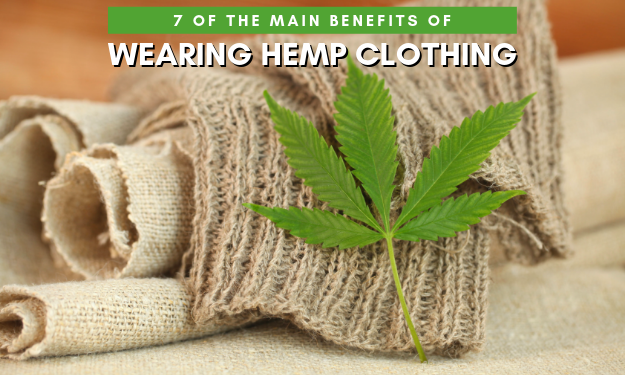New Info To Picking Bamboo Clothing
Wiki Article
Why Is Hemp So Durable And Stronger, As Well As More Regenerable?
Hemp's inherent properties in addition to the method of growing it, make it more biodegradable and long-lasting than cotton. Here's why- Biodegradability-
Natural FiberNatural Fiber Hemp fibers are made from a plant that is biodegradable. Clothing and textiles from hemp naturally decompose after being thrown away. They are returned to the earth, without leaving lasting residue. Compare this to synthetic fibers like polyester, which can take hundreds of year to break down.
Hemp fabrics are usually not contaminated with synthetic additives or treatments that block biodegradability. However, some cotton textiles are treated with synthetic chemicals such as dyes or finishes which can slow biodegradation process.
Durability-
Hemp fibers can be characterized by their durability and strength. Hemp textiles, clothing, and other products are more durable than cotton. This means that hemp clothing can last longer before it begins to show indications of wear and tear.
Hemp fabrics tend to be less prone to pilling which results in the formation of tiny, fuzzy balls on the fabric's surface. This attribute is crucial to the quality and durability of hemp fabrics.
Regenerative Agriculture-
Soil health Hemp farming has regenerative qualities when it is done sustainably. The deep roots of hemp help prevent erosion and soil compaction, and can enhance soil health by aeration and enhanced microbial activity. The regenerative qualities can make the land better to be suited to future crops.
Low environmental impactSustainable hemp cultivation techniques usually require minimal pesticides and herbicide usage, which reduces the environmental impact. A cotton farming practice that uses synthetic chemicals is more likely to cause erosion of soils and degrade the quality of water.
Water Efficiency-
Hemp can be grown with lower water requirements than cotton. Its drought-resistant properties mean it can thrive with minimal irrigation, or even in conditions that are rain-fed. This makes it an ideal option for areas that have scarce water resources.
Hemp can be incorporated into crop rotations, which improve soil health by reducing the risk of disease and soil depletion. In cotton farming that is conventional Crop rotation is more rare.
Hemp has a great deal of potential. It can be utilized to create a variety of items, including paper, clothing construction materials, textiles. Hemp cultivation is a versatile crop that can be used to support a variety of industries through environmentally sustainable and regenerative techniques.
Although hemp has these benefits however, it is important to remember that both hemp and cotton can be grown sustainably or in a non-sustainable manner, based on the practices of farming and processing methods. It is best to choose hemp products made with eco-friendly and ethical methods. This will increase the environmental benefits of hemp. Making the choice to buy organic cotton can also reduce the environmental issues associated with traditional cotton production. See the best hemp clothing info for blog info including hemp apparel fabric, hemp polo shirts, hemp shorts patagonia, patagonia hemp overalls, hemp shorts, patagonia hemp jacket, jungmaven sweatshirt, patagonia hemp pants, patagonia hemp work pants, mens hemp trousers and more.

How Can Hemp Fibers Benefit On Carbon Sequestration, Sustainability And Crop Rotation?
Carbon Sequestration Hemp fibers offer numerous environmental benefits which include the sustainability of crops, crop rotation and carbon sequestration.
Hemp grows quickly and matures within 70 to 120 days, depending on variations and the conditions under which it grows. In order to speed up their growth, hemp plants absorb CO2 from the air as part photosynthesis. This carbon uptake could contribute significantly to the sequestration of carbon dioxide, reducing the amount of CO2 that is absorbed by the atmosphere.
Hemp has a high biomass production. The plant's dense and tall foliage generates a large amount of organic materials. When mixed in the soil or used for various purposes, can help to build up of carbon.
Sustainability:
Hemp farming requires less synthetic pesticides. It also requires fewer herbicides. The natural resistance of hemp reduces the necessity for chemical interventions. Organic hemp farming in particular, emphasizes sustainable agriculture by avoiding synthetic chemicals.
Water Efficiency- Hemp is a relatively water-efficient crop that can thrive with little irrigation, particularly when compared with traditional cotton that is water-intensive. This makes it more sustainable in areas that have limited water resources.
The deep-rooted system of hemp can enhance the soil's health. Its roots help reduce soil runoff and stabilize the soil structure, which helps prevent soil erosion. Hemp is a great plant to boost soil microbial activity, which helps to improve soil nutrient cycle and fertility.
Hemp can be easily integrated in rotation systems. Crop rotation is the practice of alternating crops in a field over duration. This practice can help break the cycles of disease and pest as well as reduce soil erosion and improve the soil structure. Hemp's role in rotational farming helps to sustain agricultural practices.
Crop Rotation
Hemp is a versatile crop that can be used in rotation with vegetables, grains, and legumes. Diversification is crucial to maintain soil health, reducing the risk of pests or diseases specific to particular crops, as well as helping to ensure a balanced cycle of nutrients.
Hemp’s deep-rooted roots can penetrate soils and open them up and reduce compaction. This improves water infiltration. After hemp, improved soil structures help subsequent crops.
Hemp fibers are a great option for crop rotation due to of their rapid growth, high biomass production, minimal need for chemicals, high water efficiency, and positive effects on soil health and compatibility. The hemp fibers produced through this sustainable, regenerative farming practice are an excellent option for making textiles. See the best hemp clothes for website advice including jungmaven clothing, hemp fabric clothing, t shirt hemp, nomad hemp wear, 100 hemp t shirt, hemp sportswear, hemp t shirt mens, hemp apparel wholesale, hoodlamb coat, womens hemp clothing and more.

What's the difference between hemp fiber and bamboo fiber?
The two plant-based fibers hemp and Bamboo are utilized in textile production and have their distinct characteristics and properties. Here are a few of the most significant differences between hemp fiber and bamboo fiber- 1. Plant Source-
Hemp- Hemp fibers are made from the stalks of the hemp plant, and specifically the bast fibers on the outside. Hemp has been used to serve a variety of purposes throughout the centuries. It is a fast-growing, versatile plant.
Bamboo fibers- Bamboo fibers come by removing the woody part of the bamboo plant. Bamboo is a fast-growing grass species renowned for its rapid renewal and sustainability.
2. Fiber Characteristics
Hemp- Hemp fibres are well-known for their strength and durable. They are some of the strongest natural fibres, and they become softer after every wash. This makes them ideal for durable textiles.
Bamboo- Bamboo is a silky, soft fiber. They are more fragile and less robust than hemp fibers, but are still valued for the comfort they provide against skin.
3. Texture-
Hemp- Hemp has a slightly rough texture, particularly when it is in its natural state. It's soft, but the texture is different than bamboo.
Bamboo- Bamboo fabric is smooth silky and incredibly soft. It is frequently described by those who wear it as being a blend of cotton and silk.
4. Breathability & Moisture-Wicking-
Hemp- Hemp fibres are naturally breathable, moisture-wicking and allow air circulation. They absorb moisture and allow for air circulation. They are able to keep you cool and dry in hot conditions.
Bamboo Fibers- Bamboo fibres are known for their an excellent degree of breathability and moisture wicking. Micro-gaps within the fabric increase the fabric's ability to regulate temperature and moisture, allowing you to stay comfortably in a variety of conditions.
5. Environmental Impact-
Hemp- Hemp fiber is an environmentally-friendly plant because of its low requirement for water rapid growth, and resistance against pests. This reduces the need for pesticides and herbicides. It is able to sequester CO2 from the air as it grows.
Bamboo is renowned for being sustainable. It is fast growing, requires little water and is a breeze to cultivate without synthetic pesticides. Certain varieties of bamboo, such as Moso bamboo are very eco-friendly.
6. Processing-
Hemp- Hemp fibers must be extensively processed to separate the bast fibers from the core. Processing can include decorations, retting and mechanical separation.
Bamboo Fibers of bamboo are generally obtained through a chemical process called the rayon or viscose process. Bamboo pulp is broken down using chemicals. This process can be harmful for the environment if not handled responsibly. However, certain bamboo textiles employ closed-loop systems that minimize the waste of chemicals.
7. Versatility-
Hemp- Hemp is versatile, with many uses including building materials, clothing and textiles.
Bamboo fibers can be found in a wide range of products, such as sheets and towels.
Both hemp, and bamboo are unique and have sustainability advantages. Your choice depends on your personal preferences regarding the environment and what you're looking for in terms of specific characteristics and properties. See the recommended https://www.koraoutdoor.com/collections/bamboo for blog tips including bamboo apparel wholesale, childrens bamboo socks, childrens bamboo socks, bamboo sweatshirt, bamboo clothing sustainable, bamboo onesies, bamboo clothing for women, rayon from bamboo fabric, yala pajamas, bamboo viscose pajamas and more.
